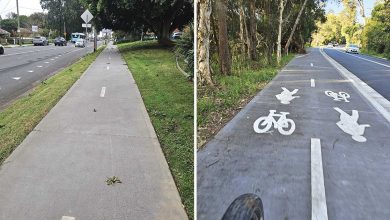Asbestos Awareness
1 in 3 houses contain asbestos and if your home was built before 1990 it is likely to be in this category. Over 3000 products were commonly used in Australian homes and businesses before their use was banned in 2003.
While many of us may think about and prepare to find asbestos when renovating or getting into some home DIY, it’s easy to forget about this deadly risk with the additional stress and trauma that accompanies natural disasters.
These materials must be managed safely to protect yourself, your family, and your local community from unnecessary exposure to fibres. Roofing, internal walls and ceilings, eaves, pipes, flooring underlay, and fencing can all contain asbestos.
The physical damage caused by floods, storms, and wind, allows previously contained fibres from broken or eroded materials to become loose and airborne as dust particles. If these are breathed in, they can lead to fatal lung disease in the form of cancers, (lung cancer or mesothelioma) or asbestosis (severe scarring of the lungs).
4000 people tragically die of the asbestos-related disease each year in Australia, which is 3 times the annual road toll. Most of these people unknowingly came into contact with asbestos in their homes while doing handywork or were tradespeople not wearing correct protective equipment.
A licensed removalist knows how to safely remove and dispose of asbestos, then decontaminate your property to minimise health risks. Using a professional is the safest approach but not always possible immediately following a flood or a storm.
WHAT SHOULD YOU DO?
1. Contact council or emergency services for advice. They can provide valuable information and an asbestos management plan. The Hills Shire Council website is a good resource with useful links to asbestosawareness.com.au
2. Know what materials are likely to contain asbestos (product database) and where in your home they would be (homeowner checklist) – these can be found through links on the council’s website.
3. If you find yourself in an emergency situation, full PPE (personal protective equipment) is best but at the bare minimum always wear heavy-duty rubber gloves, sturdy footwear, and a P2 mask.
4. These materials are considered safer when they are wet as the fibres are less likely to become airborne. If damaged materials are drying out, gently dampen them with a hose until they can be disposed of.
5. When cleaning asbestos-containing walls or roofs, do this gently by hand or with a garden hose, not a pressure hose or water blaster as these risk releasing contaminating fibres over a large area.
6. Never put asbestos-containing material in any council bins or skip bins (it is illegal), it must be properly disposed of at an asbestos landfill site. This is crucial to keeping your family, volunteers and clean-up crews safe.
More detailed information can be found at thehills.nsw.gov.au – just search ‘asbestos’ or by calling 9843 0555.
[/vc_column_text][us_image image=”68348″ size=”full” align=”center”][/vc_column][/vc_row][vc_row][vc_column][vc_column_text]The physical damage caused by floods, storms, and wind, allows previously contained fibres from broken or eroded materials to become loose and airborne as dust particles. The physical damage caused by floods, storms, and wind, allows previously contained fibres from broken or eroded materials to become loose and airborne as dust particles. [/vc_column_text][/vc_column][/vc_row]









